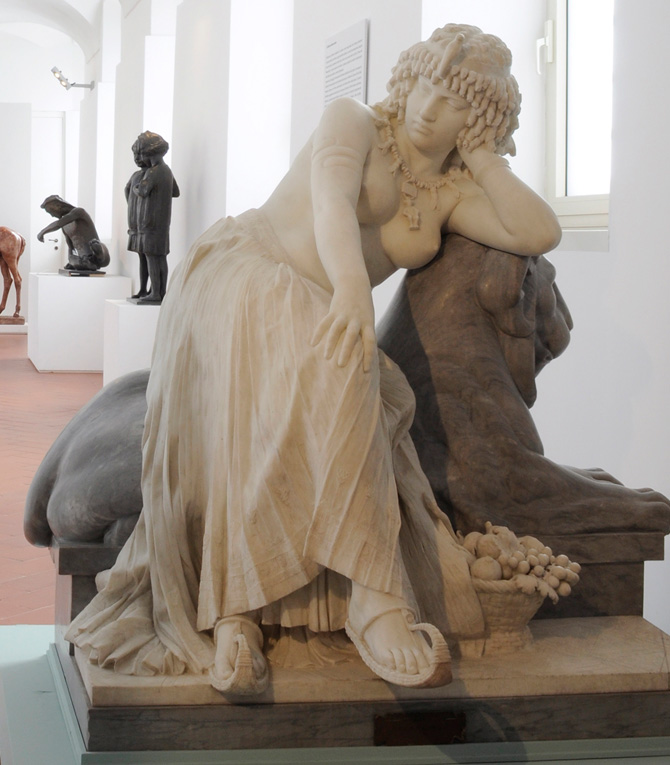Helmeted Gaul, hero of Sainte-Anastasie 7th-6th C. BCE
"The discoveries of Marduel make it possible by comparison to replace certain statues of eastern Languedoc in a context older than that previously envisaged: this is notably the case of the two busts of Sainte-Anastasie, characterized by their large helmet falling like a hood on the shoulders, which have at the base a cubic plinth with lower mortise quite similar to that of Marduel. These sculptures, discovered in a field without any trace of habitat, at a place called Camp-Guiraud, but only 4 km from the oppidum of Castelvielh, may have belonged to a set of the same type and the same period.
These works are well known (see the bibliography in Py 1990, 816) and it will suffice to recall the essential features (fig. 6 and 7). Even before their discovery, the blocks were hung up by the plow and severely mutilated on the part placed upwards. However, they were laid out lying down, one on their backs, the other on the contrary face down on the ground, so that the depredations of the ploughshare affected for one the rear part, for the other the face. Despite these mutilations, it is clear that these works are twins. The measurements are close (H.: 53 and 53 cm, W.: 40 and 42 cm, thickness: 30 and 33 cm), the stone is the same (a limestone from the Bois des Lens, located 13.5 km southwest of Camp-Guiraud), and the composition is identical: a dice at the base with a cylindrical mortise in the center of the laying plane, curved shoulders from which emerge, in a rounded and continuous movement, both the neck and the oval face, a wide headgear widening this movement by extending beyond the shoulders. The best-preserved face is particularly expressive, with round, globular eyes in strong relief, a trihedral nose, a pinched mouth marked by a vigorous incision, a galoche chin.
The ample headdress with which these two statues are fitted, dominated by a massive crest descending to the middle of the back and adorned laterally with spiral motifs, where we have sometimes seen ram's horns, sometimes fighting horns, was most often interpreted as a helmet that has been imagined in leather given its thickness. The two sculptures bear, on the front face of the cubic block which serves as their base, incised figurations accompanied by motifs painted in red. Both have a collar or a torque around the neck and straps descending in V from the shoulders, supposed to support a pectoral. On the best-preserved bust, this pectoral is adorned with superimposed friezes representing incised chevrons, then three engraved and painted horses running to the left, and finally a double row of painted triangles.
The mortises under the plinths, probably implying an exhibition on stone pillars, and the association of two identical statues, suggest that these figurations were part of a monumental complex. The fact that no element of it was found in the surveys carried out on site after the discovery (which only found an undated stone wall and a few pieces of ceramic and scattered bones) could indicate that the busts were no longer in their context of use and that they could have been transported from somewhere else more or less close, as in the case of Marduel. As for the dating, formerly too low, we should be careful not to put it too high today, considering that the most plausible hypothesis is to synchronize these pieces with the bust of Marduel, of similar economy"
-taken from journals.openedition link below
 |
| Helmeted Gaul, hero of Sainte-Anastasie 7th-6th C. BCE. |
 |
| Profile view, and frontal view. |
Source:
https://archeologie.culture.fr/entremont/fr/heros-et-societe
https://www.flickr.com/photos/tylerbell/2686887214/in/photostream/
https://journals.openedition.org/dam/2705



Comments
Post a Comment